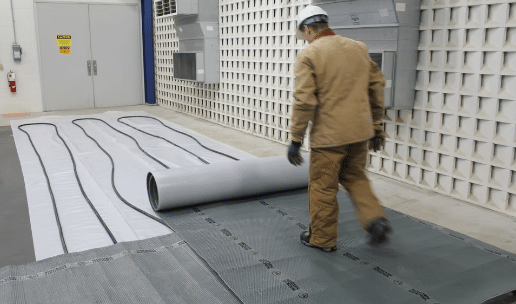Ways To Protect Your New Concrete In Winter In Poway Ca

- Salt can help make icy surfaces easier to traverse but when overused, it can corrode your newly poured concrete. If possible, use other de-icing products such as sand or kitty litter which also provide grip on slippery surfaces without damaging the concrete.
- To protect against freeze/thaw cycles, consider having your contractor apply an acrylic sealant after the new concrete has had time to cure (usually 28 days at the least). This will help keep the new concrete from cracking during extreme cold weather.
- During snowstorms, use a plastic shovel to remove as much of the snowfall as possible and make sure to sweep away any remaining snow or salt as soon as you can. Additionally, if your concrete is near foliage or trees, be sure to prune them back so that falling branches don’t damage the surface.
- If cracks already exist in the concrete before winter hits (e.g., due to poor installation), then they need special attention. Consider reinforcing these areas with hydrophobic polyurethane-based sealant or expanding foam before winter’s freeze-thaw cycle can cause further damage.
- High-pressure washes are not a good idea in cold weather as they can make these weakened areas more susceptible to cracking and crumbling. If you do need to use a power washer on your concrete, make sure the temperature is above freezing before getting started.
- Even if you try all the other protective measures, if harsh chemicals come into contact with the concrete, your efforts may be undone. Keep any cleaners or fertilizers away from your newly poured concrete surface and only use them when absolutely needed (if at all).
- The best way to protect new concrete in winter is to cover it up. Use a tarp or waterproof fabric to protect the concrete from snow and ice build-up, and always make sure to anchor the edges down so that they don’t blow away in heavy winds.
FAQ’s
At What Temperature Should You Cover Fresh Concrete?
Freshly poured concrete should be covered when temperatures drop below 50 degrees Fahrenheit (10 degrees Celsius). This will help protect the concrete from freezing and cracking during extreme cold weather.
What Do You Add To Concrete To Keep It From Freezing?
Adding a deicing agent such as calcium chloride or sodium chloride to fresh concrete will help lower the freeze point of the mixture and reduce the risk of cracking due to freezing temperatures. However, these chemicals can cause corrosion if overused, so it is important to use them sparingly.
How Long Should You Wait After Pouring Concrete Before Applying Sealant?
Most contractors recommend waiting at least 28 days before applying an acrylic sealant to newly poured concrete. This gives the concrete time to cure and will ensure that the sealant bonds properly with the surface.
Conclusion
It is important to take extra care to protect your new concrete during the winter months. By following the seven steps outlined above, you can help ensure that your newly poured concrete stays in great condition for many years to come. For more information, contact Concrete Contractor Poway Ca at (858) 683-6565.